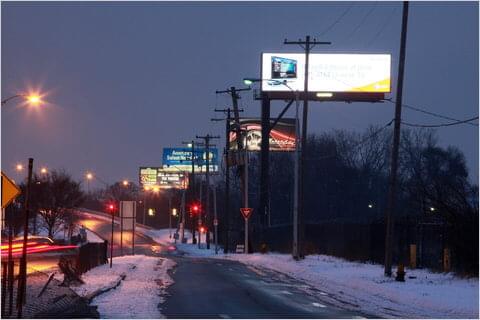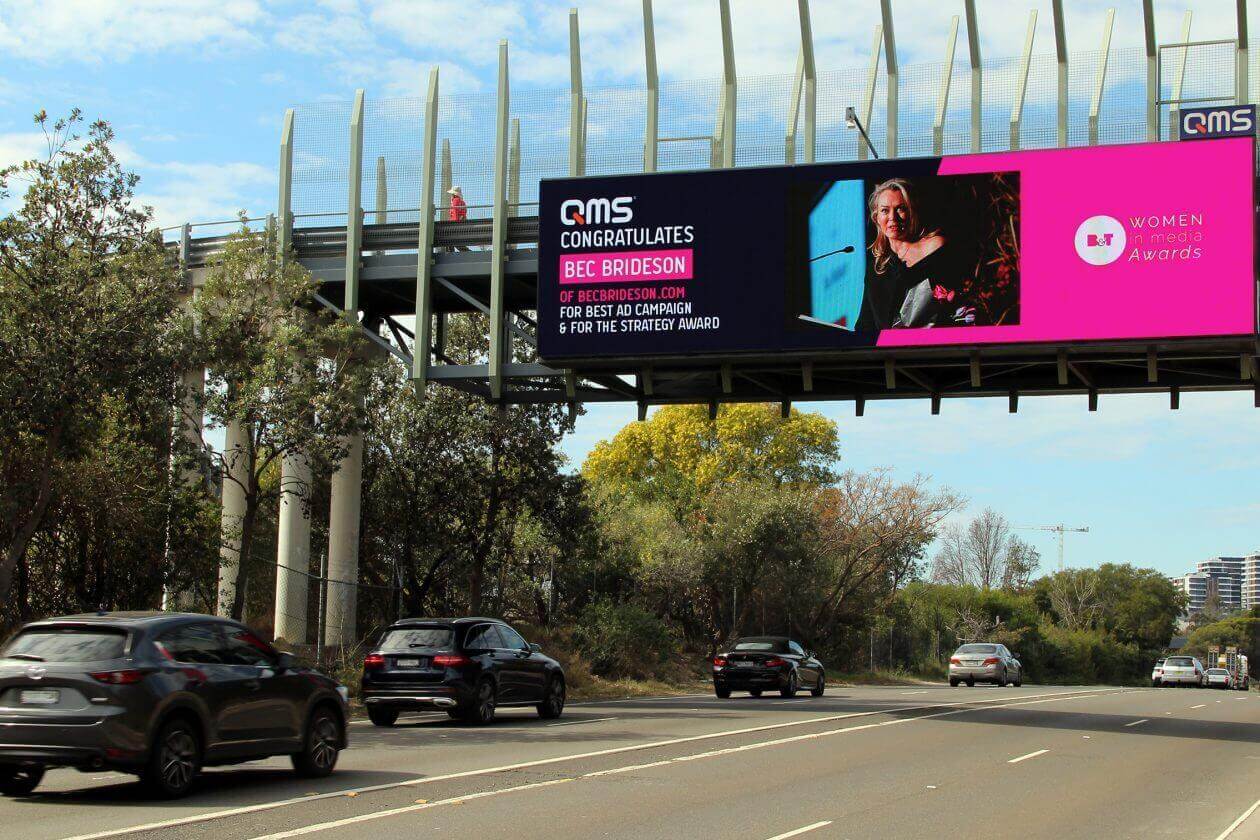
The results are in! And they’re mixed. Critics from different places have concluded opposing opinions on the environment impact of digital billboards, and we’re going to consider both sides to avoid bias. However, let it be known that digital billboards are effective out-of-home executions worthy of existing in a marketing mix. Digital signage is objectively on the rise, as big name corporations like Amazon and Apple are using digital boards to communicate with onlooking consumers. If digital billboards were really and truly harmful to the environment, would huge conglomerates like these be willingly involved in that type of medium?
This post will outline the positives and negatives of LED screens on our world, compare digital screens to paper print billboards, and, additionally, see how other billboards impact nature. Let’s see where we land in the debate.

The Good and the Bad of Digital LED Screens
There is much debate on whether or not LED signage impacts the environment any more than other OOH displays, and there are ongoing studies that detail the implications of this advertising initiative. The materials that LED screens are made up of can turn into e-waste when the billboard’s lifespan has ended, and it’s clear that this lighting machine consumes a great deal of energy. According to Gregory Young, an architectural designer and urban planner in Philadelphia and author of Driven to Distraction, which explores the risk of digital billboards, a digital billboard may consume up to 30 times of energy than an average American home uses. He points out that traditional, static billboards may only be lit up by a few lamps during nighttime while digital signage is made up of thousands of LEDs that contribute to increased borrowed energy. In his report, Young concludes by saying, “Higher electricity consumption, increased light pollution and recyclability issues should make us pause and question the growing popularity of digital signage” (Rosenthal 2010), which means one should think twice about the way energy is being stolen to create out-of-home advertising.
In contrast to this argument voiced by Young, an article by Now Signage actually hints that digital signage can, in fact, improve one’s environmental footprint. With the advancement of technology in digital billboards, there are energy efficient LED screens that are marketed as an eco-friendly alternative to the LCD option. Said screens take up less electricity and live a lot longer, which runs them at low risk of ending up in a landfill. Today, some LED signage features an automatic brightness control, which evens out the brightness given the level of ambient light surrounding the advertisement. This conserves energy and keeps the screen running longer in its lifespan. Another way LED signage may not contribute to that much waste is by eliminating a touch screen option because this involves more energy to process touch sensitive information.
Digital Vs. Paper Billboards
The main difference between static, paper-based billboards and digital billboards is, for one, digital has the ability to change pictures BUT it also requires high-functioning lighting to paint the ad’s picture. Another difference between digital and paper billboards, environmentally speaking, is that digital signage requires a cooling system as part of their design due to the fact that LED lights function poorly at high temperatures. This added function undoubtedly uses more energy resources. There’s an argument to be made for digital billboards increasing light pollution and potentially facing dire recyclability issues, and the former isn’t the case for paper billboards. According to Air Outdoor, paper billboards are the way to go in order to promote environmentally friendly outdoor messaging. Their use of water-based adhesive vinyls and 100% recyclable paper are leading the wave of static outdoor advertising whilst reducing their carbon footprint. They also use water-based inks for their printing machines, which is a sustainable alternative to printing techniques for advertising. But, how many out-of-home billboard providers follow suit with these sustainable ways?
As a counterclaim to Air Outdoor’s statements, Digital Signage Today actually argues that digital billboards are the greener alternative to paper billboard advertising. They suggest that if mistakes are caught on the advertisement after the paper printing job was performed, then all that paper would end up tossed away, forgotten, wasted. Digital signage allows changes to be made without damaging the environment, as the content can be edited at the free will of the advertiser/client. The shelf life of paper billboards are a lot shorter than digital ones, and multi-location print campaigns have more of an environmental impact. DST also brings up a real world example of a menu change at a restaurant that features additional food items. They would need to change up their entire menu format, resulting in the loss of plenty of paper. They also add to the argument, suggesting that the recycling trucks responsible for transporting paper take up energy and pollute the environment. The overuse of paper contributes to environmental waste and unnecessary overconsumption of materials. As well as this, the chemicals, inks, solvents, and adhesives on paper billboards contribute to greenhouse gas emissions during landfill decomposition. Methane gas becomes released into the environment through the final stages of the paper life cycle. DST concludes with saying that future investments in digital signage will be an eco-friendly decision.
Other Effects of Billboards on the Environment
Venturing away from the main focus of digital billboards affecting nature, billboards in their entirety contribute to other reasonable arguments environmental activists may have about their impact on our planet. A familiar criticism about billboards is that they’re an eyesore. Some may say they take away from the natural positioning of the land, and impede on all of earth’s natural milestones along road trips or driver’s commutes. Another criticism of billboards, and this one has to do specifically with paper ones, is that they contribute to the destruction of trees. Traditional roadside billboards are constructed with long, wooden boards that could be the product of clear-cutting. Lastly, billboards can be viewed as destructive to nature if they’re placed in areas that have removed plant life to make room for the advertisement. In this way, billboards can be criticized for their long-term effects.
After checking out the pros and cons of digital billboards and their longstanding effects on our environment, it’s really a tossup. There is no final answer as to whether or not digital billboards help or hurt us by their advertising power. Having said that, they absolutely contribute to light pollution that paper billboards don’t partake in. But, at the same time, they’re ability to accept messaging change and alter the ad isn’t a wasteful process. To avoid taking a certain side, let’s just say digital billboards aren’t earth’s best friend but they aren’t earth’s #1 enemy either.
What’s your take on it?
References:
Rosenthal, Elisabeth (20 December 2010). Do Digital Billboards Waste Energy? The New York Times. Retrieved from: https://green.blogs.nytimes.com/2010/12/20/do-digital-billboards-waste-energy/





